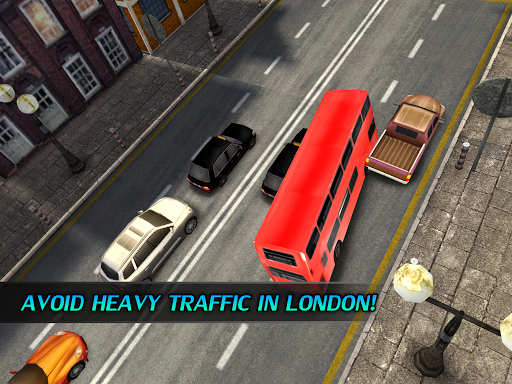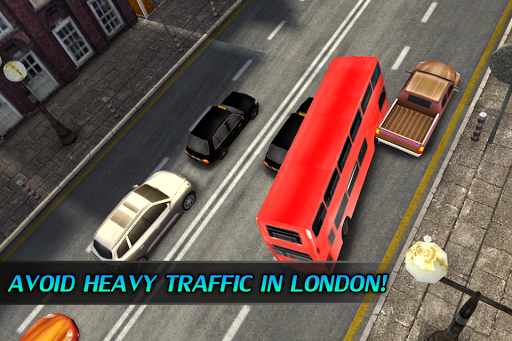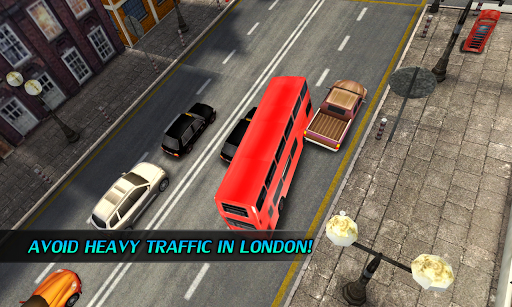A hijjacked London City Bus hits the city streets in this crazy arcade game. A nutcase is navigating heavy traffic during rush hour. Is he late for the next bus stop, is it an action movie, an emergency or does the bus need to make an express delivery?
You play as a reckless thug who is wanted for theft. You have a clear advantage though. You are escaping from the police in a good old London city bus. Can you master the incredible horse power that lies beneath the bonnet of your vehicle? Are your driving skills and senses sharp enough to navigate around the cross traffic on the highway? Only one obstacle is enough to terminate your run, so better watch out!
Ignore all traffic signs and lights, today this bandit will prevail and lose his pursuers. How far can you take the story, it is time to floor it to the max!
CONTROLS & TIPS
- Controls are dead simple in, simply tap left or right to change lanes, but beware of incoming traffic.
- Due to the helicopter view you can look ahead a little. Make sure to do this to successfully weave through congested traffic.
- Try to fully concentrate on your screen and get into the zone for that all important high score
FEATURES
+ Crazy high speed traffic racing
+ Cool simulator action
+ Cool bump maps
+ Beautiful HD / 3D visuals
+ Free app / game, no in-app purchases
+ The car auto accelerates so you can pay attention to the steering
+ Deformation system, your car will break apart on impact and broken parts will scatter
+ Spectacular crash animations
+ Crank up the volume for superb sound quality
Forget the tube, focus on your escape route you are the public transport now. Download now and see how far you can get!
History of the London bus
The introduction date of the very first commercial double decker bus (just like the first bus itself) seems to be open to some debate, as different versions of models and claims appear all over the internet. Generally what is agreed upon is that commercial buses were first widely introduced in the 1820′s, (with a few previous unsuccessful attempts briefly recorded in France as early as 1662) and as this is some time before the introduction of the combustion engine, they were horse drawn as you would expect.
These early buses were called ‘Omnibuses‘ and ran in France and England, and it wasn’t until 1847 when Adams & Co of Fairfield works, manufactured a vehicle with a clerestory roof with built in upper seats running the length of the bus. These were first operated by the Economic Conveyance Company of London, and to encourage people to use these the fare was half of the cost of sitting inside.
These open top double decker horse drawn buses were not initially popular, and it took nearly 10 yrs for the idea to catch on, when in 1852 John Greenwood introduced a much larger double decker with enough space for up to 42 passengers and needed pulling by 3 horses, with the top deck still accessed by a ladder.
These buses became more novel with innovations such as a staircase to make access to the top deck easier, along with forward facing garden seats rather than longitudinal bench seats, and this encouraged more ladies to ride them.
The first motorised double decker was the NS Type (pictured above) which was introduced in 1923 and was the first to feature a full covered top deck. It built by the A.E.C. (Associated Equipment Company) was considered luxurious at the time with upholstered seats rather than the wooden benches, and the closed in top deck enabled buses to compete on level terms with the trams that had become popular as a cheaper alternative, and with lots of new urban development, the freedom of the bus to adapt to new routes unlike the tram or train meant it grew in popularity very rapidly.
The next major development was the introduction of the Routemaster London Bus, first built in 1954, and put into commercial service two years later. Now buses are being followed via GPS and other tracking tools for live passenger information.

 Samsung Galaxy J7 Pro
Samsung Galaxy J7 Pro


















































































